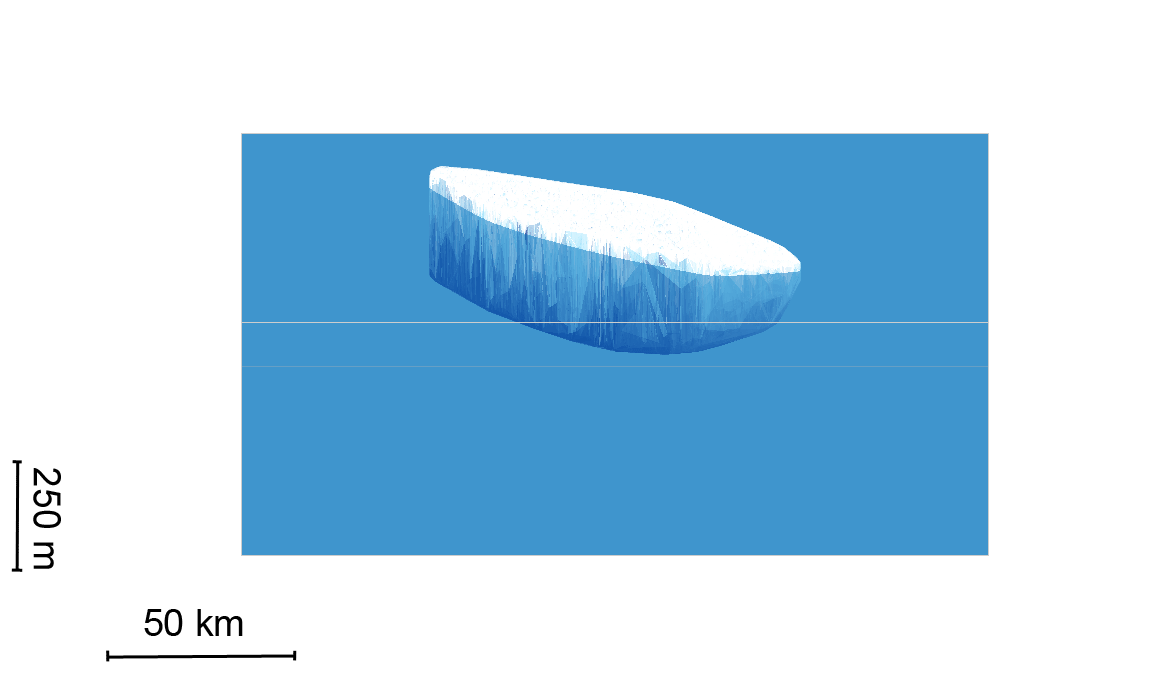'One of the largest icebergs on record' is about to break off from Antarctic ice shelf
The iceberg on the verge of breaking off from the ice shelf is located in the most rapidly warming area of Antarctica.
A new giant iceberg is about to be born. According to scientists at the ESA (European Space Agency), "one of the largest icebergs on record" is about to break off from a major Antarctic ice shelf called Larsen C and be "set adrift". The iceberg is reportedly located in the most rapidly warming area of Antarctica.
The ESA scientists used instruments aboard the CryoSat and Sentinel-1 satellites to assess the potential iceberg. The scientists predicted that the iceberg will be around 6,000 sq km in area, considered to be the size of a large city or roughly 1/4 the size of Wales.
According to Noel Gourmelen from the University of Edinburgh, the iceberg will be around "190m thick and contain about 1155 cubic kilometres of ice".
"We have also estimated that the depth below sea level could be as much as 210m," Gourmelen said. The scientists believe that a berg of such a massive size could pose a potential threat to maritime traffic and thus plan to track its path as it cuts across the ocean.
"This is a single piece which is remarkable I guess because it's of somewhat biblical proportions," ESA's Mission Scientist for CryoSat, Mark Drinkwater, said, Mashable reported.

Scientists are still unsure as to how soon the iceberg will break off and whether it will break in pieces or as a whole.
"We are not sure what will happen. It could, in fact, even calve in pieces or break up shortly after. Whole or in pieces, ocean currents could drag it north, even as far as the Falkland Islands. If so it could pose a hazard for ships in Drake Passage," Anna Hogg from the University of Leeds said.
Scientists reportedly predict, based on historical iceberg tracks, that the new berg will likely head northeast, eventually making its way to the South Atlantic Ocean. Its sheer size means that it could potentially affect regional weather conditions.
Adrian Luckman, Professor of Glaciology at Swansea University and the Principal Investigator for the MIDAS project which investigates the effects of a warming climate on the Larsen C ice shelf told IBTimes UK that his team has been researching the area since 2006 and first spotted the major rift in the ice shelf in 2014.
Professor Luckman added that while iceberg calving events such as this are not uncommon, in this particular case, the sheer magnitude of the berg's size makes it a rarity. "Iceberg calving is a natural part of the cycle of an ice shelf. The ice shelf grows, cracks appear and pieces float off. Over the long term, in stable conditions, the area remains constant. This, however, is an unusually large calving event, and it will leave the shelf at its smallest ever recorded size," he said.
However, the iceberg's size and the fairly shallow waters near the Antarctic mean that there is a chance that the berg will dig in or get stuck onto the seafloor. "The icebergs often shoal and pivot or spin around their grounding point, resulting in stop and go motion or a change in direction. So, the iceberg from Larsen C could take some time before it escapes the shallow [waters] of the western Weddell Sea," Drinkwater said, the BBC reported.
Fortunately, according to Luckman, there's unlikely to be any immediate consequences of the iceberg breaking off, in terms of leading to rising sea levels. "There will be no immediate sea level rise (the iceberg is already afloat). There may follow a long (years, decades) period of further slow decay."
This article has been updated to include the comments of Professor Adrian Luckman.
© Copyright IBTimes 2024. All rights reserved.







